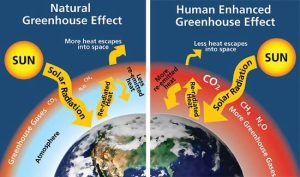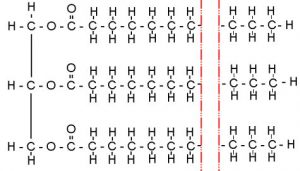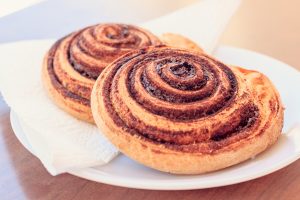
Warriors point guard Stephen Curry attempting a three-point shot Brad Penner-USA TODAY Sports; https://www.sbnation.com/nba/2017/3/6/14823068/2017-nba-scores-steph-curry-gobert-ulis-westbrook
There isn’t a jump shot in basketball more exciting than the three pointer. It gets fans off their feet, it can rapidly change the course of a game and it’s a difficult shot even for most NBA (National Basketball Association) players (the league average from three-point land was 36.2% in the 2017-2018 season). One of the most legendary three-point shots in NBA history has to be by Ray Allen of the Miami Heat in the 2013 Finals to tie the game; had he not made the shot, Miami would have surely lost the game and the Finals. In recent years there has been a revolution in the three-point shot, led by prolific shooters like Golden State Warriors point guard Stephen Curry, which has greatly impacted the way the game of basketball is played. But just how valuable is the three-point shot?
The three-point line was adopted in the NBA for the 1979-1980 season. In that season, the average team attempted just 2.8 three pointers per game. Compare that number to present day where in the 2017-2018 season the average was 29.0 three pointers attempted per game, and this season where teams are taking a staggering 31.3 attempts per game. In the early days of the three, the few shots being taken weren’t going in at a high rate either; the average three-point percentage in 1982-1983 was a measly 23.8%, the worst in history. The three-point craze has amplified in the past 9 years; since 2010 the average three pointers attempted has risen every year, from 18.0 in 2010 to 31.3 today, a 74% increase in a relatively short period of time.
There are multiple reasons why teams are attempting more threes. Simply, a three pointer is worth one more point than a two pointer (a shot from inside the three-point line. For a team to get six points, two three-point shots can be made. For a team to get six points shooting only two pointers, three shots must be made. In theory, a three-point shooting team can have less shots and less possessions but still score the same amount of points as a strictly two-point shooting team, if they convert on their three-point shots at a high enough percentage. This obviously ignores the fact that three-point shots are inherently more difficult to make given the further distance from the basket. However, when analyzing the average points scored per type of shot attempted, the three-point shot proves it’s worth. Over the 1998-2018 NBA seasons, “players have averaged 1.05 points per ‘above-the-break 3’ (from the top of the three-point line) and 1.16 points per corner 3 (from the corners of the three-point line). In contrast, players have averaged just 0.79 points per 2-point attempt outside of the ‘restricted area’. In other words, 100 mid-range jumpers (2 pointer) will provide 79 points on average, while 100 above-the-break 3s would provide 105”. (ShotTracker). As the data shows, it is more efficient to attempt three-point shots than to attempt mid-range two-point jump shots, or even two-point shots from inside the paint (the rectangular area close to the basket). The only type of shot with a higher points per shot average are shots from just below the basket, with an average of 1.2 points per shot attempted. Shots taken from this distance are high-percentage layups and dunks (for example, last season players successfully made 89.6% of their dunk attempts).
With more and more teams realizing the value of the three-point shot, their tactics and tendencies have changed. Teams have been gradually decreasing the number of two-point jump shots they take and increasing the number of three-point shots they take; for the first time in the 2014-2015 season, teams were more likely to shoot a three than a two-point jumper. From 1998-2018, the percentage of shots attempted from three-point range increased from 13% of all shots to 33%, while two-point shots from mid-range decreased from 38% to just 19% of all shots attempted.

Rockets shooting guard James Harden attempting a three-point shot https://healthytopic.org/rockets-vs-warriors-score-james-harden039s-game-winning-3-caps-off-insane-night-to-beat-steph-curry-golden-state-in-ot-cbssports-com/
In addition to it’s efficiency by itself, the three-point shot also allows other type of shots to become more efficient by spacing the court and making it easier for the offence to function. This spacing allows players to drive, cut and post-up towards the basket, resulting in higher percentage scoring opportunities such as layups and dunks. Surprisingly, the Golden State Warriors and Houston Rockets, who are among the best three-point shooting teams in the NBA, led the league in two-point percentage with 55.8% and 55.2% respectively last season. Houston led the league in three-pointers made per game with 15.0, and Golden State led the league in three-point percentage with 38.3% last season. With their fast-paced and three-point shot oriented offence, the Warriors have won the NBA championship three times in the past four years.
The NBA has greatly changed from what it was even 10 years ago; as such, strategies that were successful back then may not be as successful today. There is one clear thing that the statistics show: the three-point shot is definitely proving to be valuable. More teams are using statistics and analytics to try to gain a cutting edge in a sport that is often decided by razor-thin margins, and the three-point shot has been shown to give an advantage to teams that can utilize it properly. This shows the importance of using statistics in basketball and its ability to influence the actions of players on the court and improve a team’s performance, putting them in the best position to compete for the coveted championship.
-Sepehr Haghighat
















